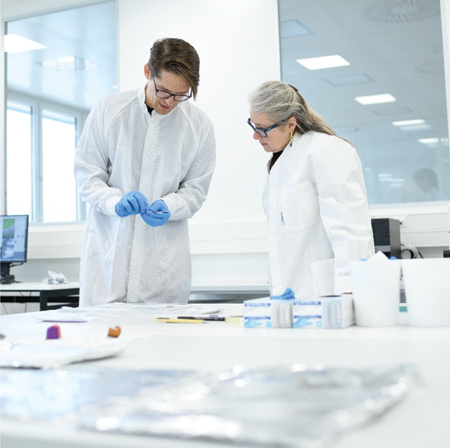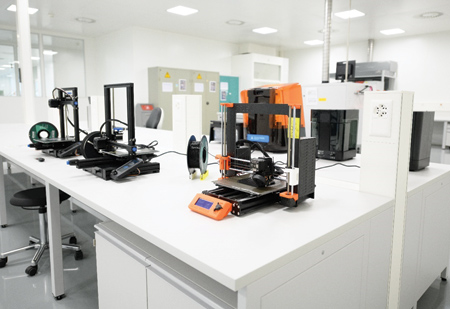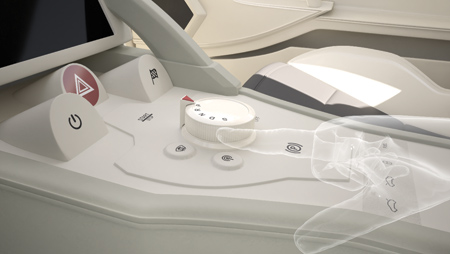
One of the new Datwyler T&I Labs

All T&I Labs operate entirely in-house and enable close collaboration.

3D printers for prototyping

Haptic feedback and morphing buttons powered by EAP technology
Datwyler has launched new, dedicated Technology & Innovation (T&I) Labs in Schattdorf, Switzerland, comprising a series of specialist laboratories, to further support customers globally.
"The new T&I Labs feature the latest, state-of-the-art equipment, which will drive the development of breakthrough, innovative products and also the improvement of existing products through advanced root cause analysis," said a spokesperson. "Often, the interpretation of data is a challenge to customers. By combining Datwyler's extensive material expertise with the capabilities of the labs, it is possible to analyze the interaction between materials, to optimize their properties and to control the processes for the highest quality outcomes."
"The T&I Labs offer customers the ability to use our expertise and equipment to find the ideal solution for their problem or co-engineer an entirely new product together with us," said Dr. Luciane Klafke, Head of Mixing and Lab Technologies at Datwyler. "Since our T&I Labs are entirely in-house, we offer complete independence, transparency and flexibility at every stage of the development process. This enables us to take total ownership of material quality, process control and analysis. We are able to develop, together with our customers, the best functionality and material combination for their products, and because the labs are independent, we can do so without affecting production schedules in any way."
The ability to characterize and analyze surfaces and the contact between different materials provides a strategic advantage to Datwyler's customers. From recipe development to advanced technologies, it is possible to start from scratch with new materials, combinations and processes and then to go into how to implement them into production. Existing parts can also be used for experiments to develop new coatings and processes independently. This means, for example, when a new bonding agent is required, now the fine-tuning of the bonding agent application can be done in parallel without stopping production-offering much more flexibility to customers.
The labs also enhance the ability to analyze and optimize the manufacturing process and the functionality of a component within a system in a situation that is as close to reality as possible.
Klafke said: "What we have created at the T&I Labs that is truly unique is a cleanroom environment. We are able to recreate very similar conditions to the production environment, which allows us to prototype in these rooms, and we can do many iterations, tests and experiments to achieve the highest quality solutions. This not only makes the integration time shorter, but it also means the feedback loop is much faster, enhancing speed-to-market for our customers."
As mobility applications continue to move forward, advanced technologies will require greater functionality in terms of materials and surface treatments. Sealing solutions must perform at the highest level, but may also be required to perform in other ways given their new environment, such as maintaining temperature stability. Highly advanced electroactive polymers (EAP) are also an example. Their use in stacked actuation technologies for electrification and electric vehicles has led to advances such as haptic feedback and morphing buttons within the cabin interior, as well as lower energy consumption and reduced mechanical complexity when compared to today's actuators.
Dr. Jakub Kadlcak, Head of Material Development Mobility and General Industry, added: "Functionality is a core focus in terms of innovation, and there are many challenges we must address. Certain coatings, for battery cells for example, will require a material that is thermally conductive and electrically insulating with EMI shielding, and these are qualities that are often contradictory. Improving conductivity increases shielding efficiency, but sometimes this is not required, and a coating must be added to counter the effects. Because the functionality of materials is not visible - you have to make it visible through testing to achieve the desired results. The new T&I Labs will be instrumental here in these instances and will, we are sure, become the go-to global competence resource for surface technologies and future-oriented material solutions."
For more information contact:
Datwyler
mobility@datwyler.com
datwyler.com/industrial-solutions/mobility